
What is Negative SEO?
SEO has been an integral part of digital marketing for over a decade. As good as SEO is, there are two sides to the coin. That there exists a negative side to SEO that exists as well. Your competitors can use negative SEO to impact your own website’s rankings. While search engine algorithms are getting more complex, negative SEO still works.
Negative SEO is something that has been around for as long as SEO. This is how competitors can negatively affect your website. It typically falls under the Black Hat scheme and is frowned upon.
Let’s look at different parts of negative SEO and how you can get the most out of your website.
What are the Different Types of Negative SEO Attacks?
Negative On-Page SEO
Negative on-page SEO is the most typical negative SEO attack. As a website owner, you should never take negative SEO lightly. It also requires a high degree of specialization. Here an attacker can make changes to your content or code to gain increased negative impact. It requires high-level access, so you should be protected on all fronts.
Sometimes your competitor can also gain access to your website’s content. They can change your content into something spammy and irrelevant. When this happens, Google search engines are less keen to index your website.
With their access to your website, they can even add hidden links. These links can be anything from spurious websites to illegal content. When crawlers come across these sorts of links, they will immediately act on them.
Solution
A solution to recover from this problem would be to keep your security updated. Always choose an HTTPS security protocol when you’re building your website. This is the highest certification for security we currently have. As a bonus, this also adds to your SERP ranking.
Read More About Content Marketing Strategy to Keep Your Business Thrive
Hacking and Malware Attacks
Hacking a website has become more common now. As technology improves, hackers have also upped their game. Hacking a website is not easy, but it’s a definite possibility if you have strong competitors.
Your competitor gains access to many of your on-site features by hacking a website. And what is most alarming is that they can do anything with it. The effects can be anything from drop-in rankings to losing search engine visibility.
There are also instances of websites being hacked for their data. Hackers can gain access to more private data like customer payment details. Something like this happening is far more damaging to the business. It results in a loss of trust and a drop in overall brand value.
Malware is another problem where hackers can inject malicious code directly into your website. Again, coding is a far more specialized task requiring more programming skills.
Solution
When your website is hacked, there are a lot of things that can go wrong with it. It can take a long time to fix, depending on the severity. The first thing you should do when you identify a hack is to go offline on that page. Make sure those URLs return a 404 page not found.
Once you do that, it’s time to look into the website code or use tools manually. Several applications in the market can help you track and fix hacking attempts.
Content Scraping and Duplication
Scraping refers to how people copy your content onto several other websites. Search engine crawlers can result in red flags for content duplication. On the other hand, their websites might also rank higher than yours for the same keyword.
Since the Panda update on Google search engines, duplicate content has gotten a pretty harsh penalty. The specific web page, or sometimes even the whole website, can be deindexed. It can mean months of effort going down the drain unless you identify it quickly.
This kind of response is what the hacker is counting on. Another advantage attacker has with this is that the effort is very minimal. All they need to do is copy-paste your website content onto hundreds of other websites they’ve created.
Solution
Since this is a simple way to negatively SEO your website, you should always be ready for it. Today, powerful tools can assist you in preventing or recovering from this problem.
Copyscape and Quetext are two websites that can help. Both these programs can help identify other web pages using your copy. Once you do that, you can either approach the website’s webmaster or Google depending on how it plays out.
Artificial Bounce Rate (Pogo Sticking)
If you’re a marketer or a business owner, you understand how important bounce rate is to website ranking. Any website with a high bounce rate will never rank at the top of Google searches.
Pogo sticking or introducing artificial bounce is how hackers can manipulate your website’s bounce rate. An attacker introduces thousands of bots to your website that click on and click away. This significantly inflates your bounce rate, causing Google to think that people find your website irrelevant. It is, without a doubt, a black hat SEO technique.
Now, Google cannot identify Pogo sticking happening on your website. This means the onus is on you to maintain your website’s safety. There might be developments in Google searches in the future, which enable it to trace and rectify this issue.
Solution
As far as posting is concerned, there is no way to prevent this rather than being diligent. Using tools like Google Analytics can give you a good idea about the sudden increase in bounce rates. Regularly track unusual behavior on your website.
Deleting Websites from Searches
While this can sound like fantasy, it is entirely true. Hackers can delete your website from searches. It has to do with people who have your website credentials. It can include unhappy employees or ex-employees from your company.
These people might still have access to your dashboard, which you might not have changed. They can use this to hijack your website from sources. It is also possible to exclude your website entirely from search engine spiders.
They can manipulate code and other important aspects with the right access and expertise. As you can imagine, this can be pretty damaging for your website and business. If you do not pay enough attention to this, you might end up with a defunct website.
Solution
It pays to be careful about your employees’ accounts when they leave the company. Regulate and audit their access, even existing employees, to make it safe.
As the business owner, you must ensure that ex-employees do not have access. There are several ways you can do this right on the Google console. Go to the “Removals” tab and control or remove their access.
Also Read: How to Hire SEO Experts for Startup in 2022
How to Find Out If Your Site Is Suffering from Negative SEO?
It is important to keep track of your website’s health at all times. It could mean two things if you notice a sudden downward trend regarding your SEO metrics. It could be an unscheduled search engine update or somebody running a negative SEO campaign.
You need to understand if it was just another search engine update or if somebody was using malicious methods. These are how you can confirm that it is negative SEO.
Via Warnings from Google
Usually, the first sign that something is wrong with your website is a Google warning. You will receive an error message when Google identifies something malicious on your website.
This could also mean that there are other penalties to your website. But if you haven’t made any changes to the website, now is a good time to look at other possibilities. The Google Search Console can help you find what’s wrong with your site. If you didn’t make the highlighted changes, you’ve got a problem on your hands.
Analyze Search Traffic Numbers
Another identifier of negative SEO is a sudden drop in search traffic. Traffic is a metric that takes a long time to change unless you have content that affects it drastically. This also includes going viral or being deindexed for a specific keyword.
Here, Google Search Console can help you find the reason for the drop-in traffic. Ensure that you check your Google Analytics for any changes on your website. Your website might be hacked if you do not recognize or recollect making those changes.
Drop-In Keyword Rankings
An area you should focus on is keyword rankings. These are some of the best indicators of negative SEO for any niche. Small changes to keyword rankings are normal. Keywords moving a few places up or down during a month or two does happen.
The movement is especially true when you’re ranked high on searches. Dropping completely out of the first page or from the top three points to something problematic. A key point to note here is that drops in keywords happen in groups, and attackers focus on several keywords, not just one.
Unknown Increase or Decrease in Backlinks
Backlink monitoring is a key area to prevent negative SEO. This is pretty much the same process you use to monitor keywords. During negative SEO attempts, the number of backlinks on your page can drastically increase or decrease.
If a person has access to your website, they might be able to delete backlinks. They can also create spurious backlinks to your website from their end. However, these processes can hurt your website and cause it to lose rankings. Sometimes in the worst cases, it can even be deindexed.
Content Appears in Several Places
A definite indication of negative SEO is that your content appears in many more places. Content duplication is a serious offense, and Google tries to minimize it. And one of the methods it uses to reduce it is the indexing of duplicate content.
Content duplication figures high on the list of negative SEO tactics. The reason is that it is simple to accomplish and doesn’t take a lot of resources. Sometimes, Google sends out warnings in case of duplicate content. You can use tools such as Copyscape to validate and find other instances of your content.
How to Prevent Your Site from Negative SEO Attack?
As the adage goes, prevention is better than cure. While preventing a negative SEO attack takes effort, doing so is in your best interests. Recovering from a negative SEO campaign is much more difficult than preventing it.
Let’s look at ways to prevent a negative SEO attacker from ruining your website.
Running Regular SEO Audits
The first and most straightforward solution is to run regular SEO audits for your website. Any ideal SEO metrics graph should have gradual changes and not sudden spikes. These sudden increases or drops can be evidence of negative SEO attacks.
When you run regular audits, you know how your website’s metrics increase or decrease. It allows you to identify negative SEO and prevent it from happening. Even though the negative SEO has started, you can minimize the damage in the worst cases.
You can use tools like SEMrush to do an SEO audit.
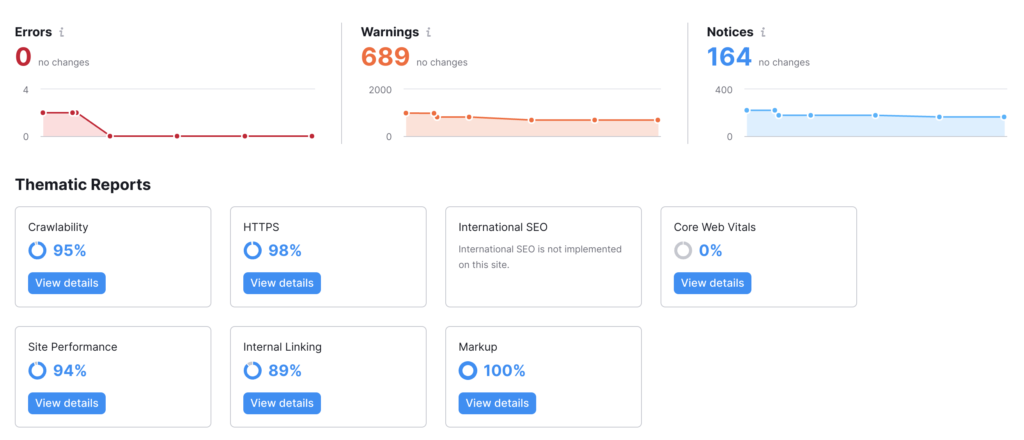
Several tools exist which can help you schedule regular SEO audits. They have notifications that you can use to identify sudden changes. This is a critical part of the negative SEO identification process.
Upgrade Your Security
There have been increased occurrences of negative SEO every year. And since SEO is dynamic and ever-changing, there is no single solution to this problem. Negative SEO aims to target legitimate users and portray them as defaulters.
While Google services are getting smarter, there is latency regarding research. This is something that these attackers exploit. At your end, all you can do is ensure that your software and security are always updated. It also helps to integrate powerful encryption on your website through HTTPS.
Implementing HTTPS can have a significant effect on your website security. This protects you from cyber-attacks and other negative SEO methods. Ensure that your team and you are brought up to speed on security when it comes to SEO.
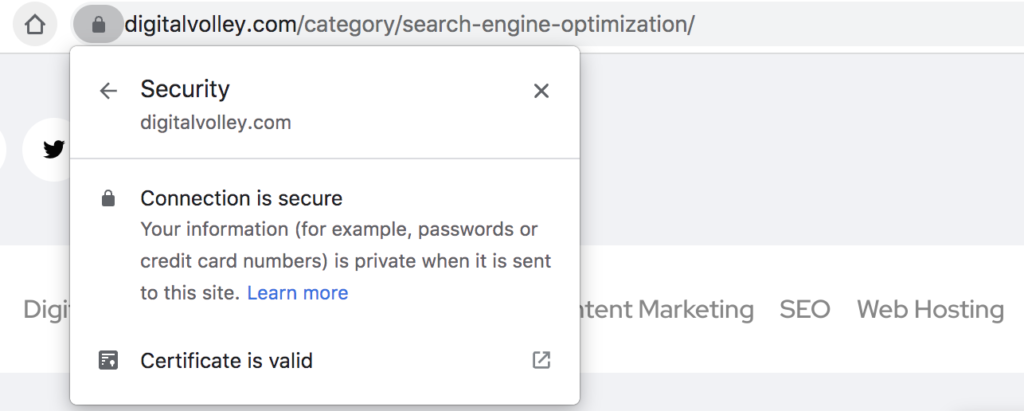
Setting Up Webmaster Tools Alerts
An aspect of negative SEO that even top companies ignore or forget is using Google Webmaster Tool alerts. You can set your Google Webmaster to send you emails for malware, attacks, or penalties.
While this might not seem like much, it is effective because it gives you enough time to develop a solution. You can do this by logging into your account and going into preferences. Then hit check on Enable Email Notifications and choose to receive alerts. Doing this can considerably improve your awareness of negative SEO and other attacks on your website.
Check Your Content for Scraping
Content duplication is one of the most common ways they can attack your website. It is a low-risk and high-reward negative SEO technique. It does not require a lot of specialization, like hacking or coding. This is one reason it is the most used method for negative SEO.
This is often used to improve thin content on other websites. Not many people are aware that content scraping has severe consequences. If their content gets indexed before yours, then they will rank higher.
The solution is to audit your website content with plagiarism-checking tools such as Copyscape or Quetext.
These tools can directly link to websites that plagiarize your content. You can use this information to get in touch with their webmaster. And if they do not respond positively, you can apply through Google’s Copyright Removal to get results.
Check Your GMB Listing
Google My Business is a public platform that accompanies most specific business searches. It highlights to people the ratings and reviews along with the business locations of the brand. People can use this to find out how well the business is doing, making navigation much easier.
GMB is another place where malicious people can attack your business. Writing negative reviews is not new or anything innovative. Negative reviews have been around for several years. Businesses have their share of negative reviews online. But if you notice a high number of bad reviews simultaneously, it can be negative SEO.
Take a look at this screenshot.
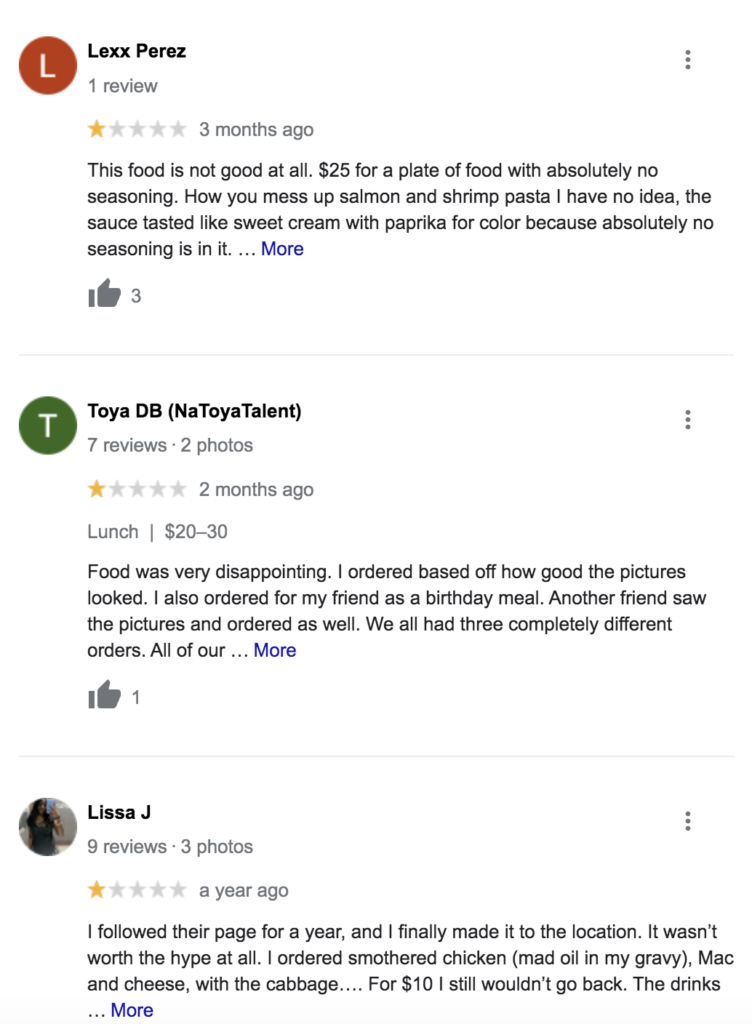
This is by far the worst way to get attacked as a business. Google has an option where you can report a review as fake. This is the only way you can respond as a business to fake reviews.
Work on Website Loading Speed
Website loading speed is an important SEO metric when it comes to rankings. The quicker your website loads, the better user experience it will have. Nobody likes a slow-loading website, and the drop-in speed is what the attackers rely on to ensure that your website loses rank.
The attackers can increase your page’s loading time by sending thousands of requests per second. They do this through bots and other illegitimate means. Again, the solution is to keep monitoring your website. Tools today can let you know if a website’s loading speed drops below optimal.
Monitor Keywords and SERP Rankings
Keywords are a critical part of the whole SEO process. They are what direct users to your website and improve SEO metrics. The problem is that the attackers know this and can engineer bounce rates.
With exploits and programming, a hacker can use keywords to generate fake bounce rates. This increases bounce rates and reduces rankings considerably.
You can use tools like seranking to monitor rankings
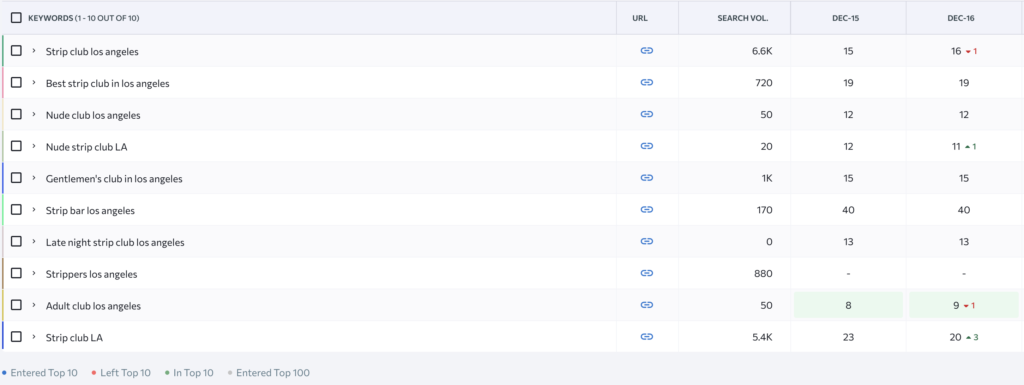
The problem is that it is difficult to spot unless you regularly check your analytics. Ensure that you have strong monitoring across your Google Analytics and keyword CTRs.
How to Recover Your Site from A Negative SEO?
With the increasing number of negative attacks on businesses, it has become important to understand how to recover from one. We take you through a few ways you can use to help your website get back on its feet.
Understand the Type of Attack
The first step is to identify the kind of attacks your website was subject to. As you’ve read here before, several types of negative SEO attacks exist. Your course of action should match the kind of negative SEO that has been carried out.
While there are ways you can prevent some negative SEO attacks, you cannot prevent all of them. Remember to audit your website for drastic changes to SEO metrics continually. Huge changes can signal hacking or negative SEO, Says Keon Hoffman of Haitna..
Identify and Remove Spam Links
Backlinks are an area that has always been prone to negative SEO. This malicious practice is so common now that most brands are used to it. Any changes to backlink profiles need to be checked. This is especially true when there is a huge influx of backlinks.
Spammy backlinks are difficult to spot unless you monitor your website. Several professional tools allow people to monitor their websites effectively.
Audit and Remove Duplicate Content
The easiest way to target a website with minimal interaction is to scrape its content. All an attacker needs to do is visit their website once. They can then replicate the scraped content on multiple other websites.
Use AI-assisted content plagiarism tools, which can help you spot duplicate content. Getting rid of these websites can significantly lower your risk of negative SEO. If your website was underperforming after removing duplicates, it should rank better.
Address Negative Reviews Online
Any business is likely to have a few negative reviews online. You need to ensure that you respond to them as professionally as possible. You mustn’t brush them off, hoping people won’t read them.
For example, see how this bakery owner in Dallas responded to a negative review in GMB.
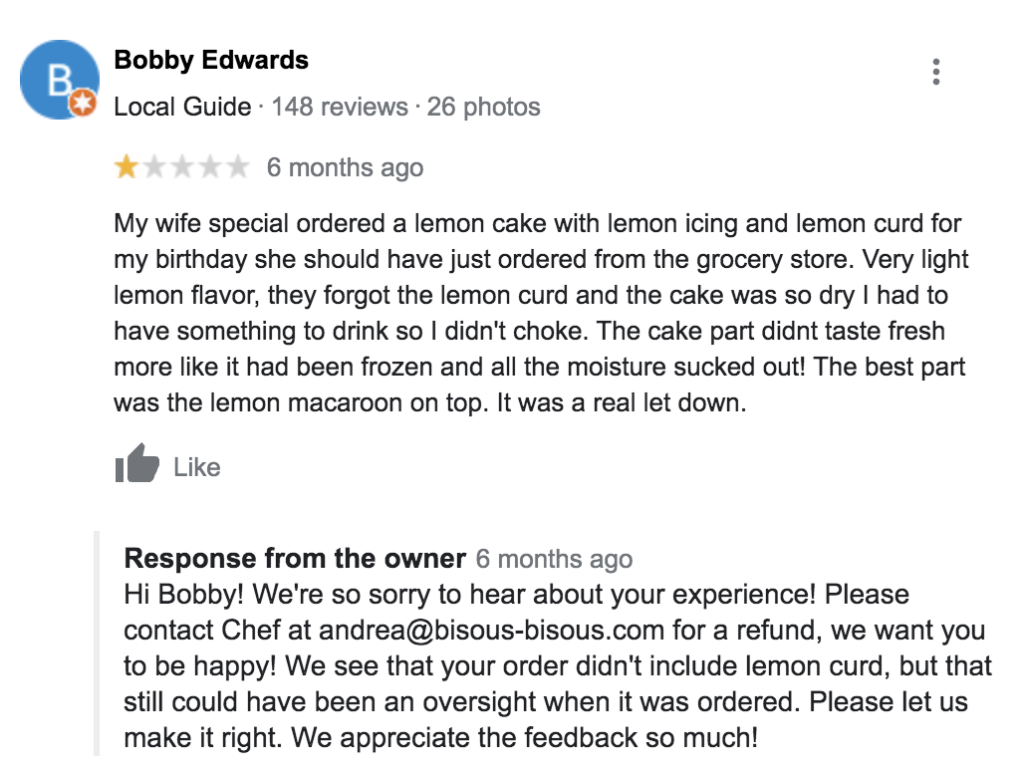
One of the best ways to do this is by using online review management agencies with years of experience dealing with both positive and negative reviews. Their work has been proven effective time and again.
Reduce or Eliminate Redirects
Redirects, like its namesake, are a method to direct users to another website. This might have many reasons, including updated content or different pages altogether. But this is a problem in the long run for security. Your competition can use them to hijack your pages.
If you have to use redirects, check them periodically. An increased number of redirects might lead you away from your website. If this happens, there are chances your website will be compromised.
FAQs:
Unusual spikes or drops in traffic, low-quality backlinks, spammy comments, and sudden decreases in search engine rankings can be indicators of a negative SEO attack.
Recovering from a negative SEO attack can take time and effort. Focus on creating high-quality content, building positive backlinks, and improving your website’s overall SEO.
Maintain strong website security, monitor your backlink profile, and be vigilant for suspicious activity. Consider using reputation management services.









